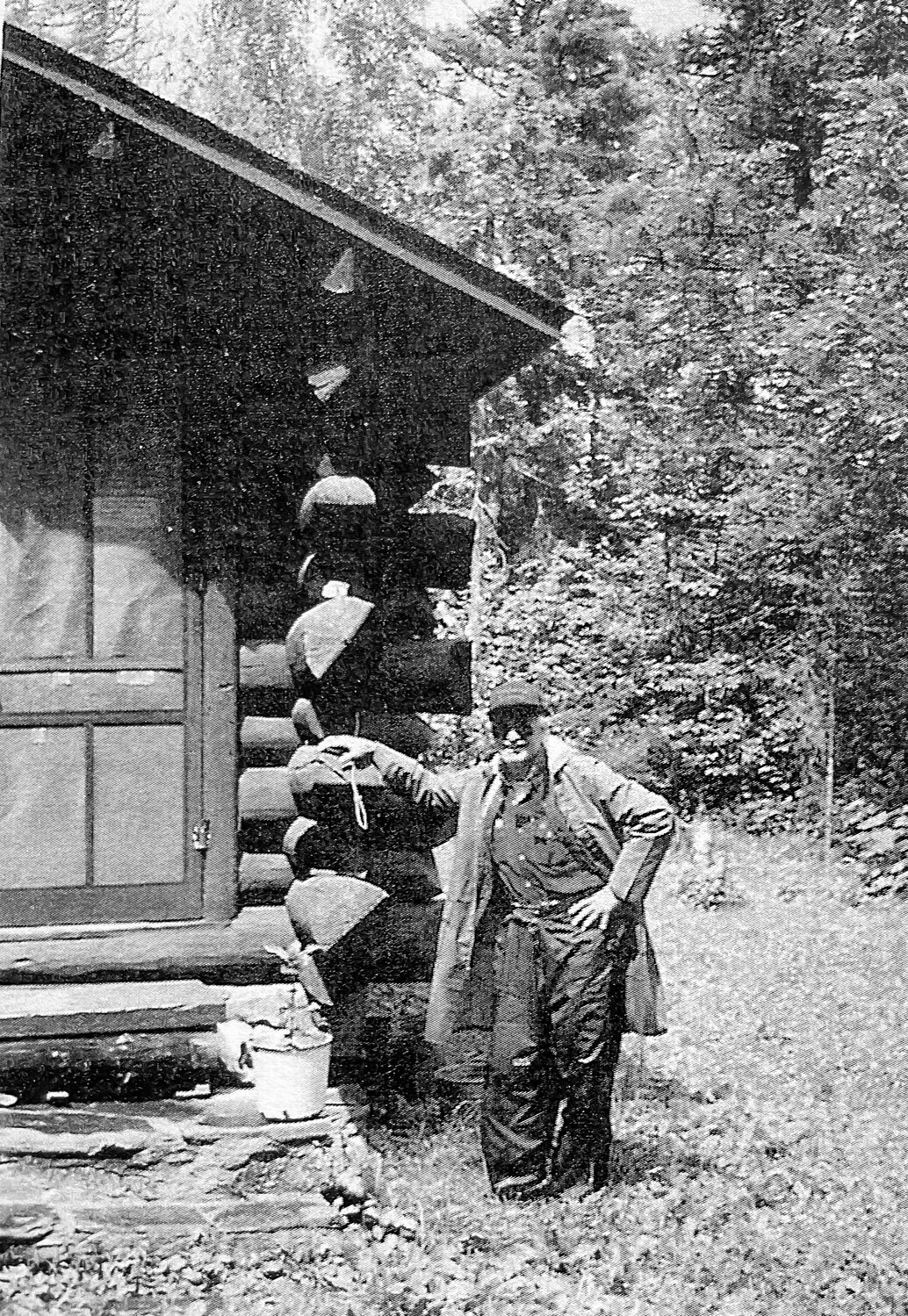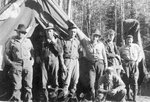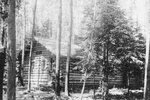Support the Timberjay by making a donation.
The origins of the Kekekabic
New history booklet highlights the building of the Boundary Water’s longest trail
ELY—A new historical paper, published in booklet form by Becky Rom earlier this summer, highlights the origins of the 40-mile-long Kekekabic Trail, based primarily on the experiences of her father, Bill Rom Sr. during his early years with the U.S. Forest Service.
What follows are extended, lightly edited, excerpts that provide insight into the origins of what is known today as the longest and most challenging hiking trail in the Boundary Waters, stretching from Snowbank Lake on the west to the Gunflint Trail on the east.
While the trail is used for hiking today, it was originally built to provide access to four fire towers located in what is now the BWCAW.
It was an arduous task. As Rom’s account notes: “Crews of 10 or 12 young men grubbed every foot of the Kek Trail with hoes; they moved rocks and leveled the ground. They cleared brush and trees with hand axes, crosscut saws, and brush scythes.”
They followed a route that some earlier visitors to the area had already explored, as Rom writes: “The route across the Boundary Waters was first identified in the late 19th century as a potential location for a road or rail line. In 1891, shortly after iron ore was discovered near the end of the road now known as the Gunflint Trail, engineers from the Duluth and Iron Range Railroad scouted the route and issued a report on the feasibility of constructing a rail line. The report suggested that the rugged nature of the country would make a rail line cost-prohibitive. “The country is very broken and irregular, increasing in bold ruggedness from west to east.”
The engineers also expressed their doubts that the area had sufficient timber within easy reach of the proposed line to provide for the construction of bridges, trestles, and cross ties. It was yet another occasion when individuals who ventured into the region to ascertain its potential for resource development, came back either disappointed or dedicated to its protection.
Some years later, the Forest Service was beginning to extend its reach in terms of fire protection further into the region, by establishing a series of fire towers across the national forest and that required access trails for those who built and later manned the towers.
Other factors were also at play, notes Rom.
“As the Great Depression ravaged the nation, President Franklin Roosevelt was determined to offer meaningful work to young men who otherwise had few prospects. As a result of the passage of the Emergency Conservation Work Act in 1933, crews in 1934 built the first paths that would become part of the Kek Trail. At the same time, a Civilian Conservation Crew stationed by the Fernberg Lookout Tower began building a trail at Kawishiwi Lodge on Lake One, the original start of the Kek Trail, and worked north for about five miles. A second CCC crew constructed trails connecting Lake One to Hope Lake and Insula Lake to Island River.”
During this time, the federal government also hired young men to work in the forest service. “In 1937, the forest service hired its first 12-man crew to construct the Kek Trail. Sigurd Olson, a teacher at Ely Junior College, assisted my father [Bill Rom] and other students in gaining employment with the Kek Trail crew.”
Bill Rom was the only member of the first crew to come back for a second year of trail work, which was finally completed in September 1938 when a crew from the Ely end met up with the Gunflint crew along the Agamok River, just north of Gabimichigami Lake.
The next year, Rom signed on with the forest service to man the Kekekabic tower, the tallest (at 110 feet) and most remote of the towers on the national forest. The single observer at the tower would be stationed on site for months at a time, residing in the Kekekabic cabin, which still exists today. The Kek tower was the only tower on the forest without a phone connection, relying instead on a radio that the observer could use to contact the Fernberg tower, either to report a fire or request resupply.
Rom writes: “It was a lonely summer. There were few canoeists in those days and my dad would go several weeks without seeing a soul. During the entire month of July he did not see another person except for a canoe party that didn’t stop.” To pass the time, Rom wrote poetry and conducted a small mammal study for credit at the University of Minnesota.
Rom writes: “He had about a dozen ordinary mouse traps set along the half-mile trail between the Kek cabin and the tower. He captured nine different species of small mammals in the three months he was there. While sitting in the tower he skinned the animals and treated the skins with borax and arsenic to dry and preserve them before stuffing them with cotton and sewing the skins back into lifelike form. Some of the specimens were used for study by students in wildlife management and may still be in the zoology museum at the University of Minnesota’s St. Paul campus.”
Rom later wrote his findings, which were published in 1940 in The Flicker, then the title of the journal of the Minnesota Ornithologists Union.
Despite the effort that went into the construction of the access trail and construction of the Kek tower, it only operated for about 20 years. By the late 1950s, surveillance by aircraft had largely replaced the use of towers for fire protection, particularly in more remote areas. With the retirement of the towers, the utilitarian purpose of the Kek Trail largely vanished and it quickly became nearly impassable as the forest service relegated the trail to primitive status, which meant it was no longer maintained.
Under some pressure due to the lack of hiking opportunities in the wilderness, the forest service did make an effort to reopen the Kek Trail in the late 1960s, but later reported that the trail saw little use and maintenance declined again.
Rom writes: “In 1987, in commemoration of the 50th anniversary of the 1937 crew, Bill Rom offered $500 toward grubstaking any group that cleared the center 20 miles of the Kek Trail. He wrote a letter to the Ely Echo calling for Ely to be the trekking capital of the U.S.”
Three years later, the Kekekabic Trail Club organized and they took up Rom’s challenge. Rom writes: “Four crews with a total of 30 people devoted their Labor Day weekend to the project.”
That effort, impressive as it was, was no match for Mother Nature. Barely a month later, as Rom writes: “a heavy, wet snowstorm taught a lesson, as newly-fallen trees blocked the just-cleared trail. The restoration of the Kek Trail was clearly not a one-time affair.”
The 1990 snowstorm, of course, paled in comparison to the impact of the 1999 blowdown event. Rom writes that the storm “created extensive and massive windfalls that presented staggering challenges. Nevertheless, the dedication of the Kekekabic Trail Club (now a chapter of the North Country Trail Association) to maintaining the Kek Trail continues to this day.”
To learn more
Rom’s account of the Kekekabic Trail and her father’s experiences is an interesting read and you can purchase a copy at several locations in Ely, including Piragis Northwoods Company, Brandenburg Gallery, Ely Mercantile, Ely Outfitting Company, Canoe Country Outfitters, Spirit of the Wilderness, the Ely-Winton Historical Society, and the Dorothy Molter Museum. It is also available at the Timberjay office in Tower.













